Introduction to FOCUS
Explore the goals of FOCUS, view sample use cases, and learn about gathering FOCUS conformed datasets.
GitLab is an open-core commercial DevSecOps platform designed to help engineers collaborate through the software development lifecycle. It began in 2011 as an open source project (1) and now has an estimated 30 million users across the globe (2).
GitLab needed a custom data pipeline to unify cost and usage data from numerous cloud vendors, including Google Cloud, Oracle Cloud, AWS, Elasticsearch, Cloudflare, Grafana, and Anthropic. With employees across more than 50 countries, GitLab needed a single source of truth to begin or improve numerous FinOps Capabilities, such as Allocation, Forecasting, Rate Optimization, and Reporting & Analytics for their rapidly-changing infrastructure. GitLab brought all of this billing data together in their data warehouse where they transformed it all to align with the FOCUS Specification.
As a result, GitLab is now able to account for almost all costs, and has empowered different stakeholders with the data they need to perform Capabilities. Critically, GitLab now understands the Unit Economics of their products and features, and can use that knowledge to drive better business decisions.
Key benefits of FOCUS™ for GitLab:
FOCUS & GitLab: What is FOCUS, and How to Adopt It

Clément Leroux shares how GitLab is leveraging FOCUS to unify cost data from multiple cloud and SaaS vendors.
STMicroelectronics (ST) is a global semiconductor supplier and designer (3) with over 50,000 employees and an annual revenue of over $17 billion USD (4). Yet even with this large size, ST is able to perform FinOps with a small team of only two full-time employees (5).
STMicroelectronics used to use Azure’s standard Microsoft Export function and Cost Management API to ingest their Amortized Cost dataset each night, and would enrich the data with internal data, such as their business organizations, financial calendar, forecasts, etc. However, ST faced challenges trying to understand the metadata and definitions of different types of costs.
ST cloned their existing data pipeline and adapted it to align with the FOCUS Specification. They ran both pipelines in parallel for a few months to achieve the same cost results with both pipelines. Now, they can easily integrate data from another cloud provider into the FOCUS pipeline without the challenge of learning another set of metadata. ST shared in November 2024 that they plan to turn off their legacy dataset in January 2025.
Key benefits of FOCUS™ for STMicroelectronics:
FinOps X Europe Day 2 Keynote: STMicroelectronics
FinOps and FOCUS Best Practices at STMicroelectronics
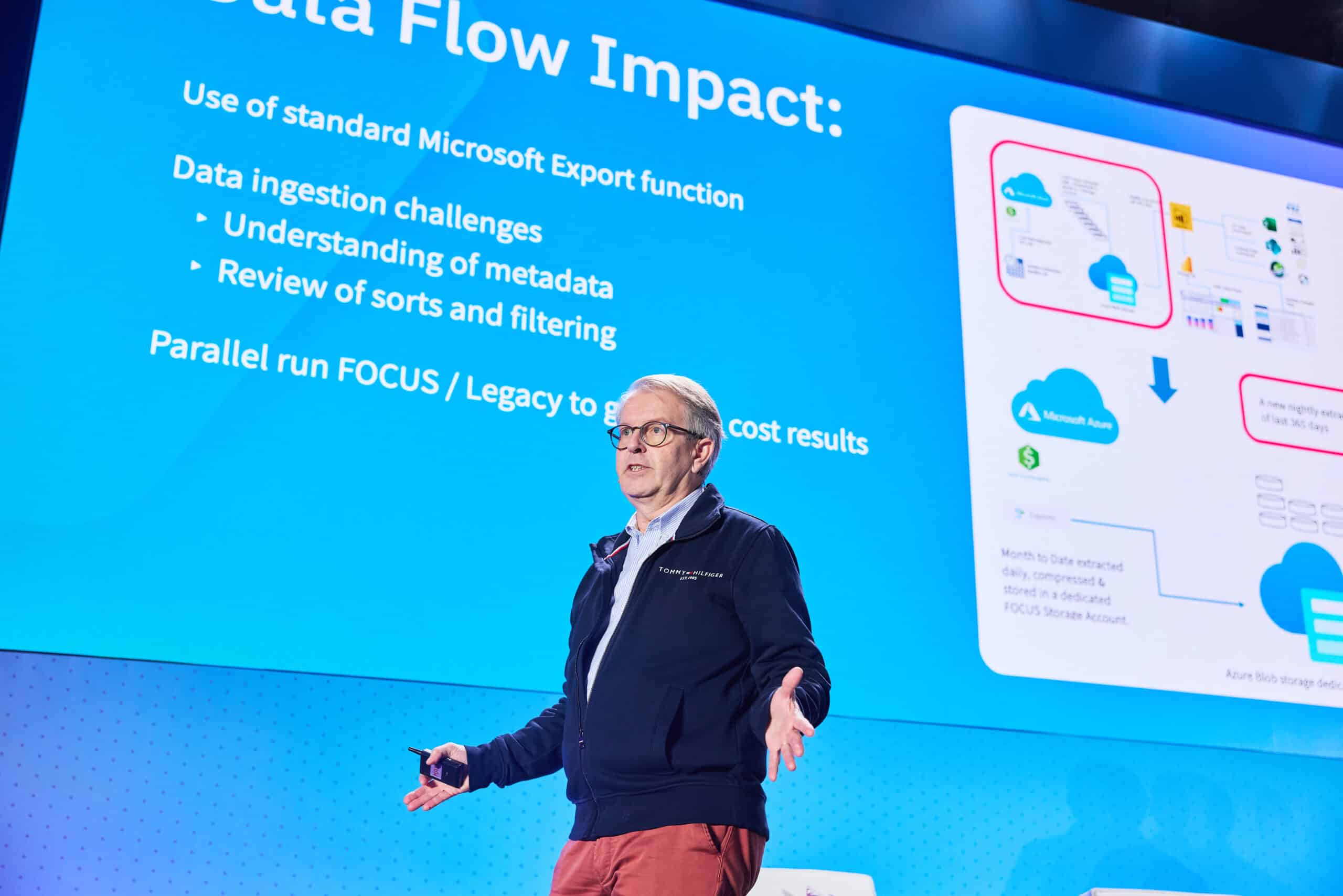
Pierre Emmanuel-Nuiry from STMicroelectronics recommends running a FOCUS data pipeline in parallel with your existing data pipeline to get started.
The European Parliament is one of the seven institutions that serve as the decision-making bodies for the European Union (EU) (6). The European Commission – which is the EU’s executive branch – acts as the cloud broker and performs chargeback for cloud usage to the 70+ organizations it serves.
As a steward of public funds, the European Parliament sought to be more efficient with IT spending through better data sharing between itself and the European Commission. The question arose about what format this data should be in, as a bespoke solution for the European Parliament would not benefit any of the other organizations. FOCUS offered an open industry standard that delivered a unified structure for data and enabled automation and scalability.
FOCUS was chosen as the data format because it offered:
With FOCUS, the European Parliament unifies cost and usage data across AWS, Microsoft Azure, IBM Cloud, and Equinix. First, FOCUS-formatted data is extracted from cloud service providers and merged with additional data from the European Commission that has been transformed into the FOCUS format using automation. Then, the European Parliament uses Amazon Athena to partition their portion of the data and store it in an Amazon S3 bucket. Next, they ingest FOCUS data into their tooling via API, and finally generate reports in the FOCUS format for various stakeholders. All data transfers are encrypted and logged, ensuring traceability and legal compliance. The solution is considered effective, efficient, and economical.
Key benefits of FOCUS™ for the EU and its institutions:
FinOps X Europe Day 1 Keynote: European Parliament
Implementing FOCUS for Cloud Cost Exchange between European Union Institutions
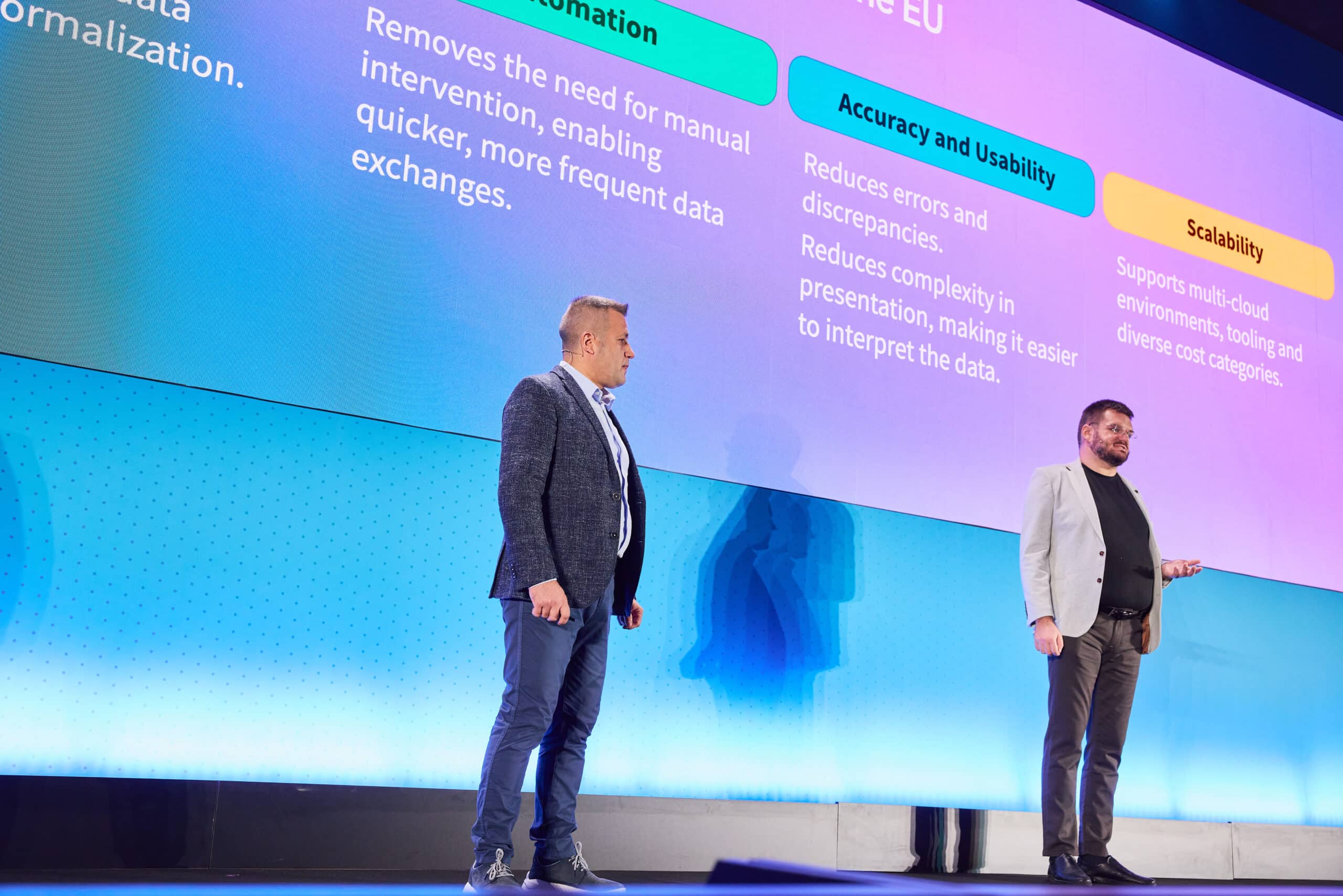
Julian Radu and Neven Drljević discuss how the European Parliament implemented FOCUS for cloud cost data exchange across European Union institutions.
UnitedHealth Group (UHG) is one of the largest companies in the United States, helping over 133 million individuals access health care insurance and services through its UnitedHealthcare and Optum brands (7).
UHG’s infrastructure spans a variety of cloud and SaaS vendors (Microsoft Azure, Google Cloud, AWS, MongoDB Atlas, Snowflake), as well as an on-premises VMware virtualized data center with a number of storage solutions. UHG’s biggest concerns are with network costs, and they needed to compare cloud network costs to on-premises network costs in order to plan cloud migrations.
Network costs are incurred very differently in the cloud vs. on-premises, so an apples-to-apples comparison proved difficult. Their proven approach to modeling cloud network costs could not be applied to their on-premises costs, primarily because the level of data granularity on-prem does not match that in the cloud.
Bringing it all together and standardizing it with FOCUS helped UHG understand that cloud network egress costs were not as alarming or concerning as they appeared to be. It also helped the organization optimize their cloud network costs even further, through better storage backup and application integration strategies.
Key benefits of FOCUS™ for UnitedHealth Group:
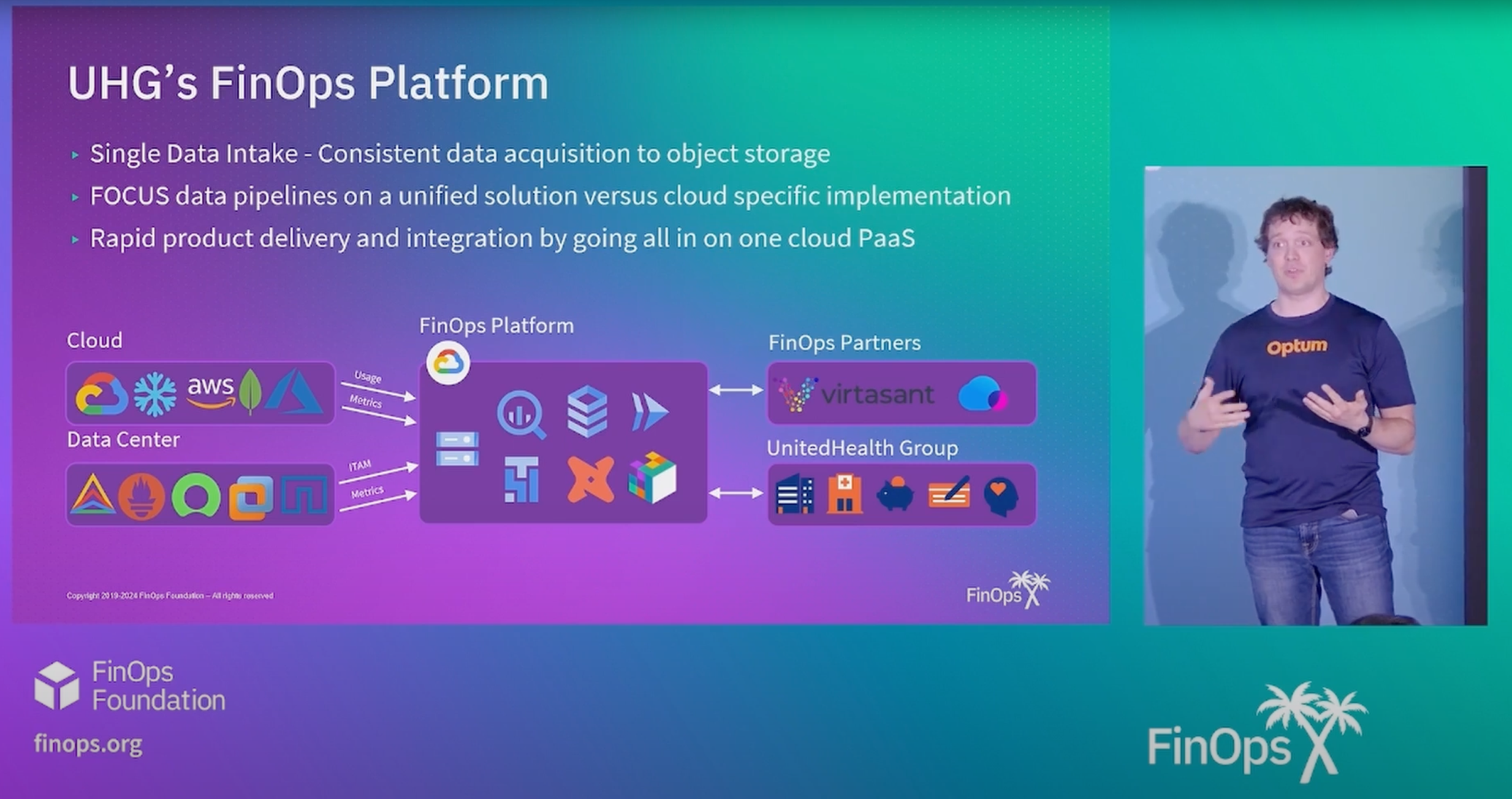
Alexander Johansson from UnitedHealth Group uses FOCUS to make apples-to-apples comparisons of cloud vs. data center network costs, and make data-driven decisions about cloud migrations.
Zoom is a video conferencing application launched in 2013 with over 300 million daily active users by 2020 (8) and 2024 revenue over $4.5 billion (9).
Zoom operates with a complex, multi-cloud infrastructure spread across the globe, and needed to unify cost data, enhance visibility, and enable data-driven cost optimization across four cloud service providers and their private data centers. The cloud team wanted to provide granular cost of ownership visibility to its finance, engineering, security, and devops stakeholders, but disparate data formats, multiple reports, and disorganized tooling made this difficult.
Zoom’s workflow begins by retrieving FOCUS-formatted data from cloud service providers using AWS Lambda, integrating that data using AWS Glue, warehousing it in Amazon Redshift, and querying it with Amazon Athena. This FOCUS data is then provided to data analyst and business intelligence teams in Snowflake, where it is married with Zoom’s business value metrics. Later this year, Zoom plans to align its private data center cost information to the FOCUS format and integrate it into this workflow.
As a result, Zoom can now generate a Product Profitability Dashboard, which helps product managers allocate resources to products and features that maximize return on investment, and a Cloud Cost Optimization Dashboard that delivers actionable insights to engineering and operations teams by showing them where infrastructure is underutilized.
Key benefits of FOCUS™ for Zoom:
Zoom Implements FOCUS to Drive Visibility in a Hybrid Environment
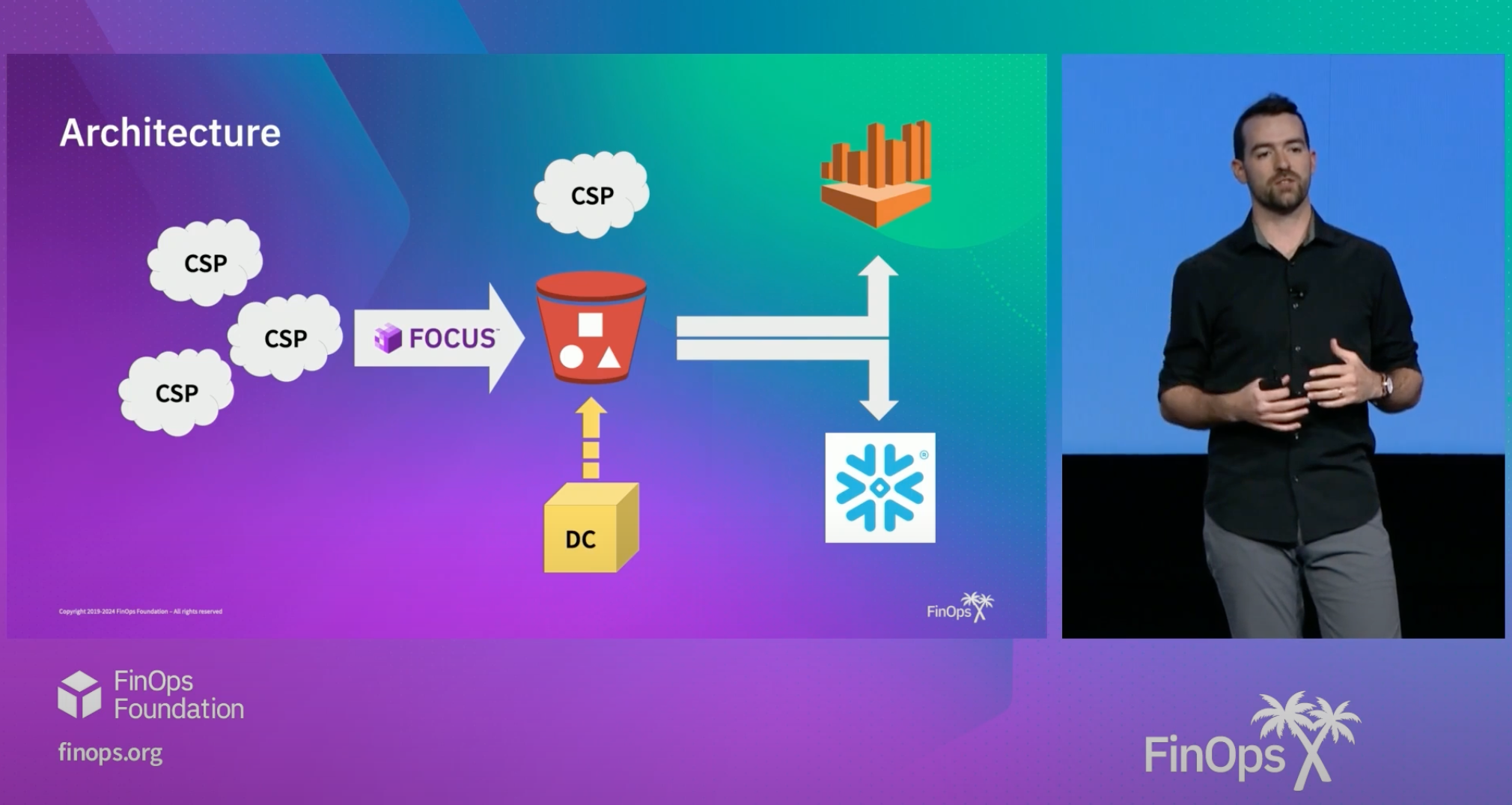
Pavan Tallapragada and Nick Konstantinou share how Zoom drives visibility and optimization across four cloud providers and their global data centers with FOCUS.
The Australian Retirement Trust was founded in 2022 and manages $230 billion in assets for its 2.4 million members (10).
This superannuation fund relies on Google Cloud and Microsoft Azure to power its technology infrastructure, and faced challenges with slow, manual processes to merge and normalize cost and usage data from these two sources to deliver accurate reporting.
With FOCUS, the Australian Retirement Trust has achieved a consolidated view of their multi-cloud billing data. They exported FOCUS-formatted data directly from their two cloud service providers, and leveraged the Microsoft FinOps ToolKit to build a FinOps hub to store, secure, and report on this consolidated data.
Key benefits of FOCUS™ for the Australian Retirement Trust:
Asia Pacific FinOps Summit: Australian Retirement Trust Uses FOCUS to Streamline Reporting
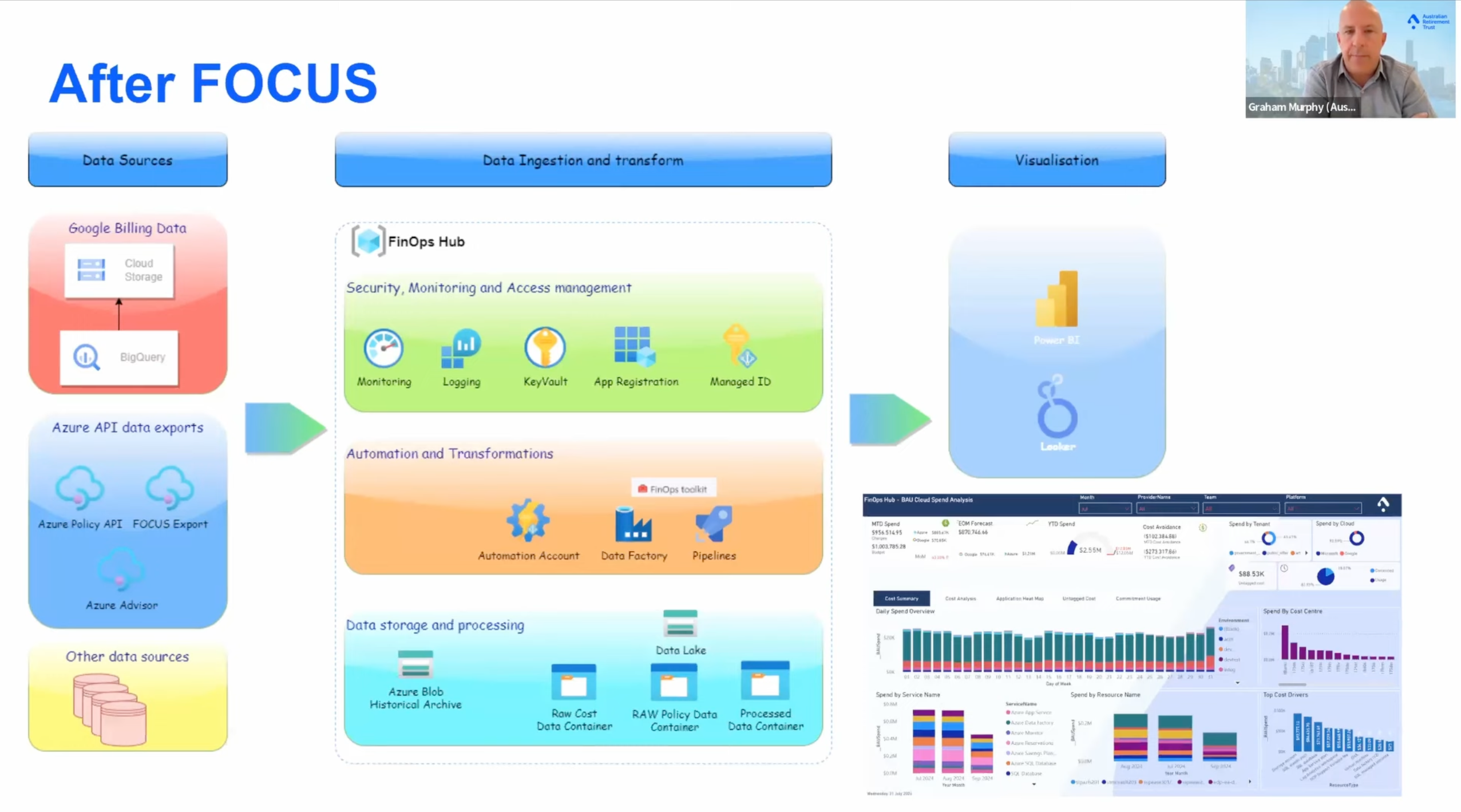 Graham Murphy from the Australian Retirement Trust used FOCUS to achieve a single source of truth for reporting.
Graham Murphy from the Australian Retirement Trust used FOCUS to achieve a single source of truth for reporting.
Heineken is a Dutch multinational brewing company that owns over 165 breweries in more than 70 countries and employs 85,000 people, with annual revenue over $33 billion (11). Their technology infrastructure spans multiple global teams in four regions around the world.
Prior to adopting FOCUS, Heineken used Excel to merge and normalize data across four public clouds (Microsoft Azure, AWS, Google Cloud, IBM) and their local private cloud. When data arrived from these disparate sources, they faced challenges with:
– Unstructured columns
– Unstructured data types
– Undefined data lengths
– Date format discrepancies
FinOps and engineering teams were able to normalize the data in Excel, but the process was time consuming and prone to errors. Heineken needed a way to standardize and simplify data normalization, and FOCUS gave them this defined format to unify data.
Key benefits of FOCUS™ for Heineken:
Let’s Extend FOCUS: Defining the Future of Private Cloud Cost Management
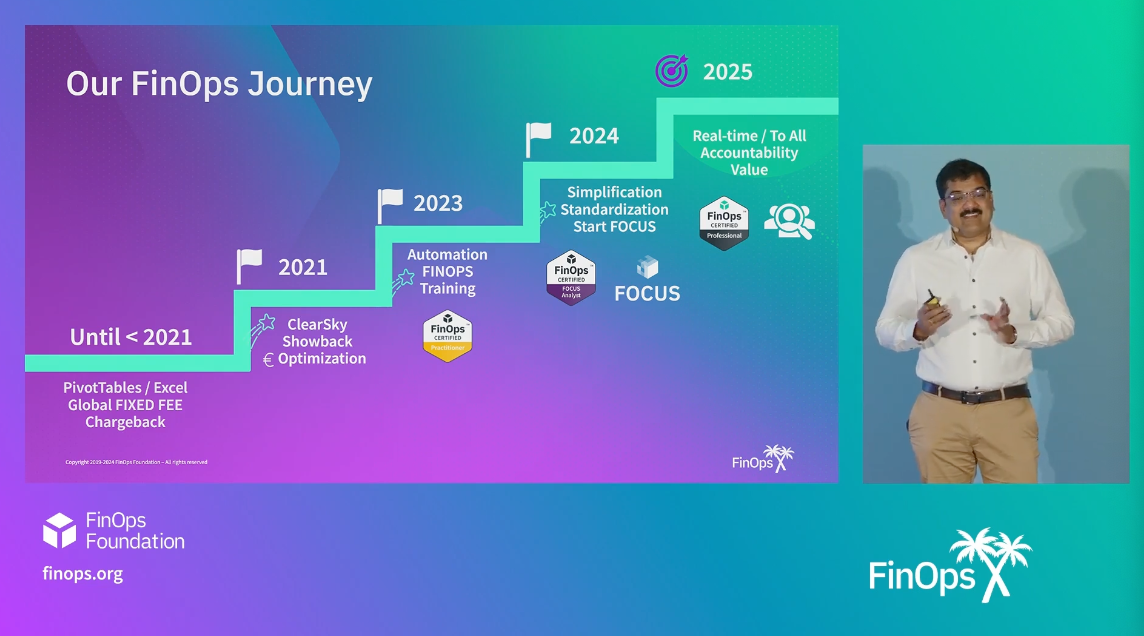
Kumar Yarlagadda from Heineken shares how they are using FOCUS to integrate cloud costs from four public clouds and their private cloud.
Create and/or comment directly on an issue in the FOCUS GitHub repository
Explore the goals of FOCUS, view sample use cases, and learn about gathering FOCUS conformed datasets.
An in-depth understanding of the FOCUS Specification, learn how to use FOCUS datasets to answer real-world business questions.
Explore the goals of FOCUS, view sample use cases, and learn about gathering FOCUS conformed datasets.
An in-depth understanding of the FOCUS Specification, learn how to use FOCUS datasets to answer real-world business questions.